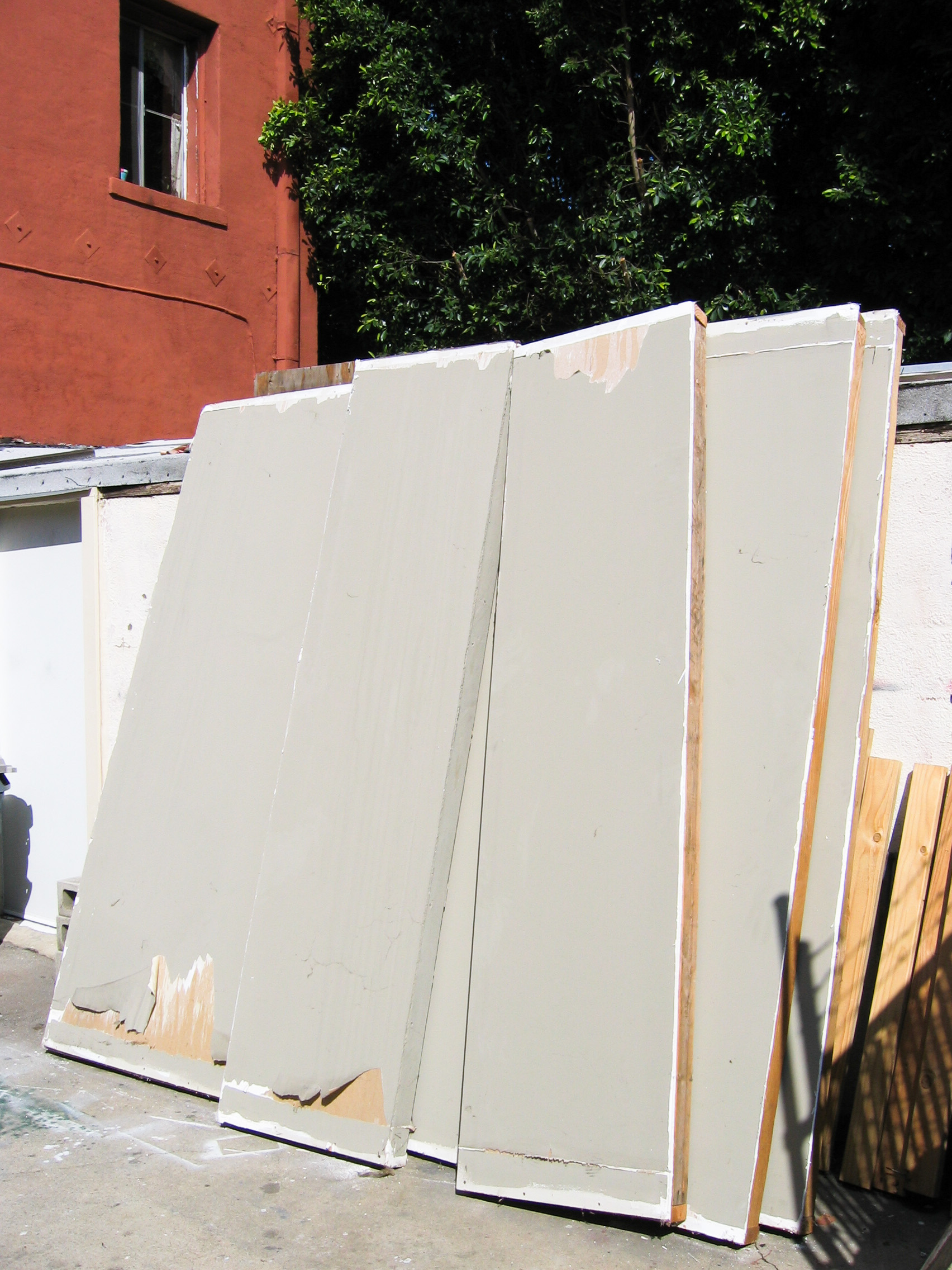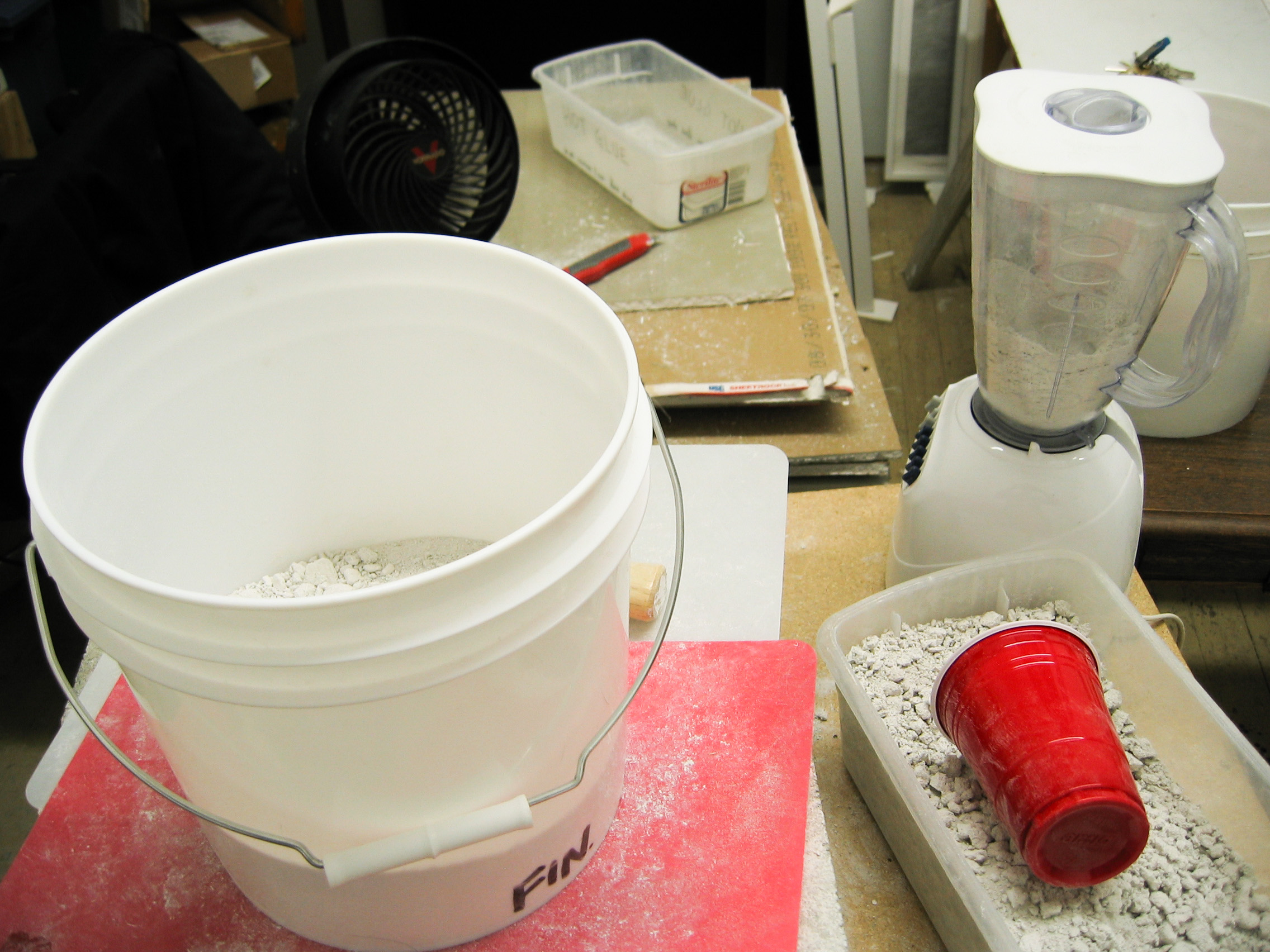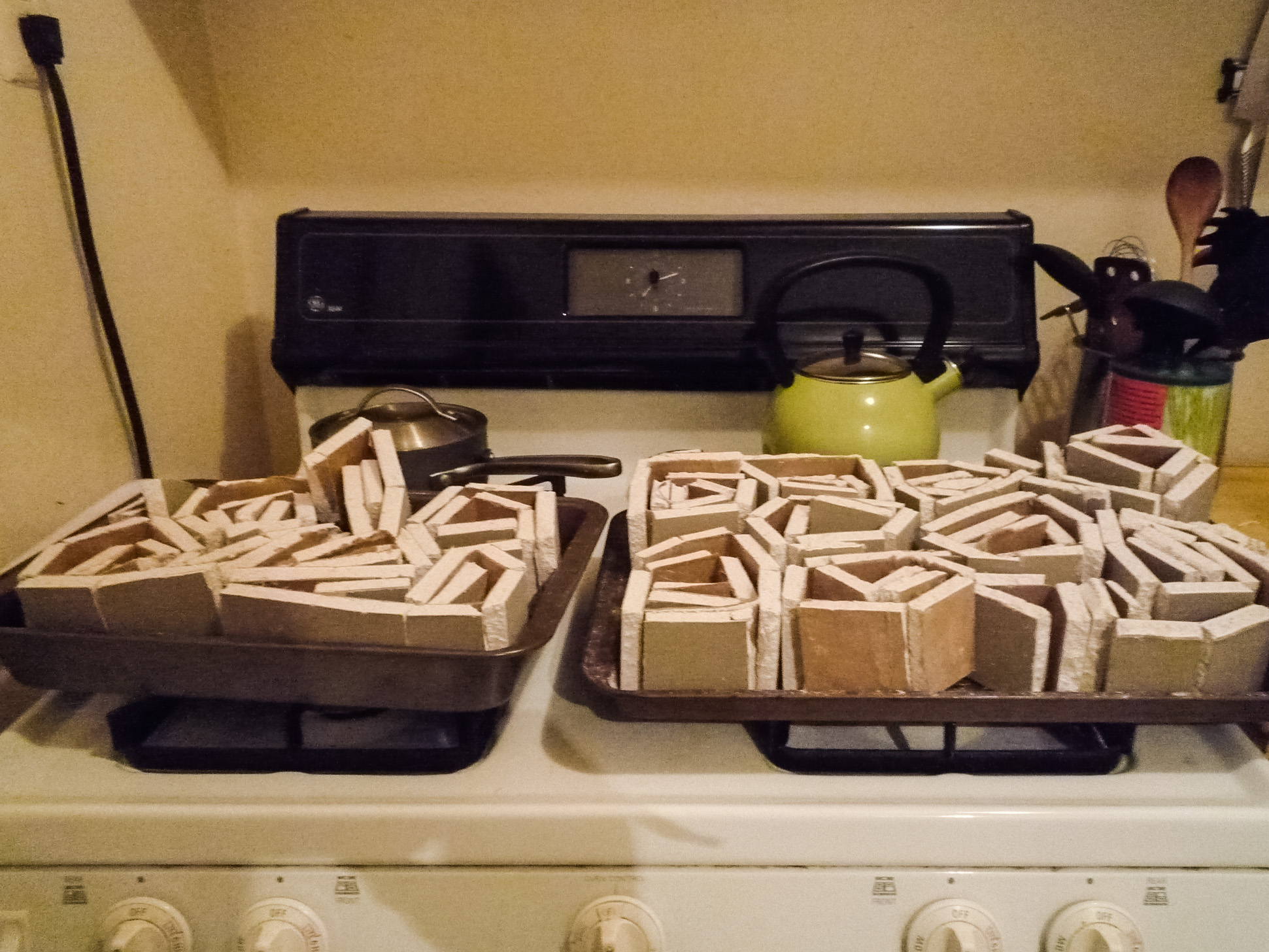Recycling Richard Long: Gallery Walls Circle
In this work, I tried to engage with the idea of recycling as broadly and holistically as possible, with regard not only to the materials used, but also to the process of making, as well as the conceptual and aesthetic basis of the work.
I was inspired by Richard Long, who brought natural and native materials from his walks into the gallery space. Like many land artists, his work complicated and broadened ideas about the site-gallery-artwork relationship.
Recycling Richard Long: Gallery Walls Circle was also inspired by my experiences working in various museums and galleries. As a preparator, I am quite familiar with building and tearing down temporary walls for exhibitions, and I had wanted to use discarded walls as material for a new artwork for some time. Thus, my work engages with Long’s practice as a playful homage and an experiment of sorts by recycling not only materials, but also ideas.
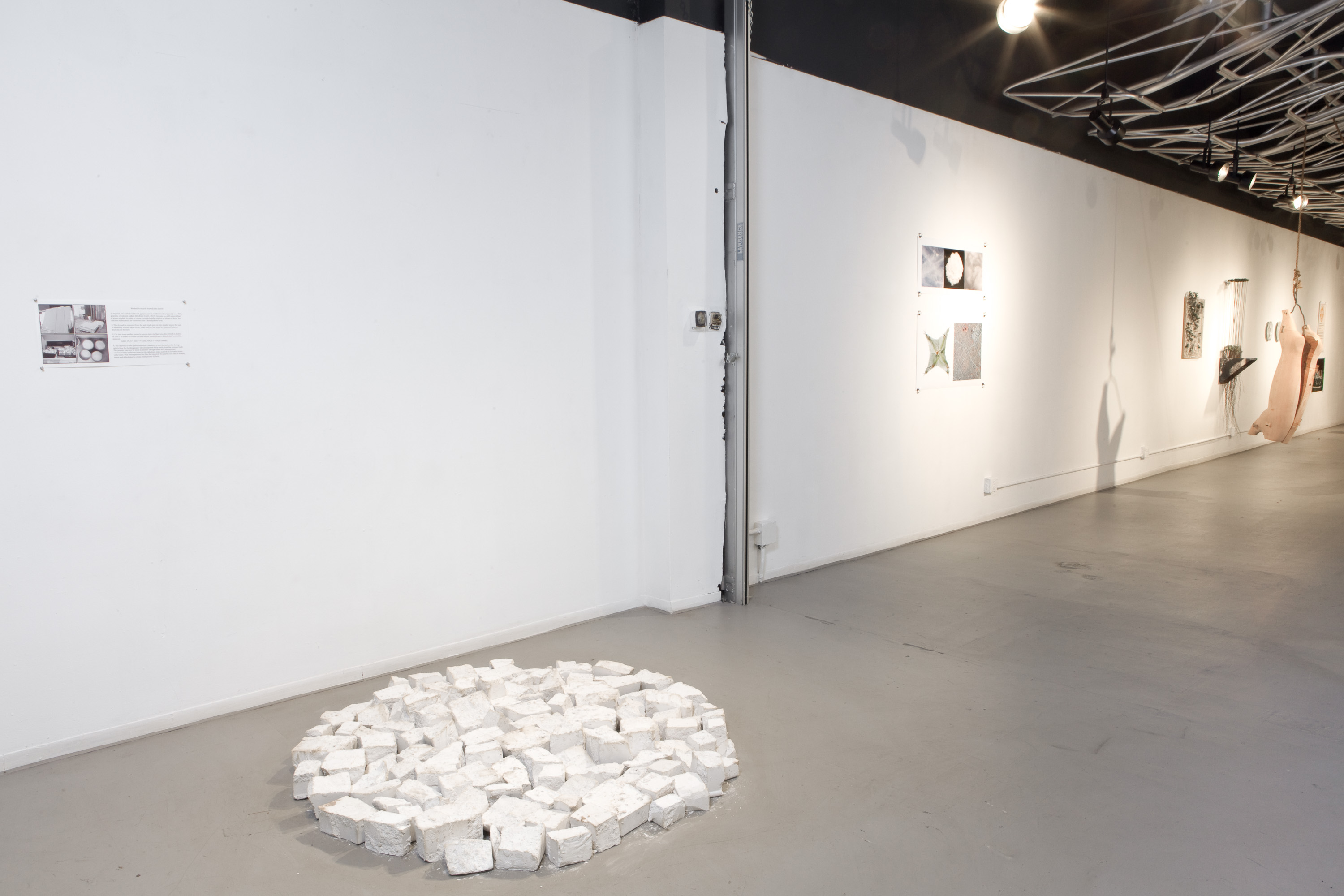

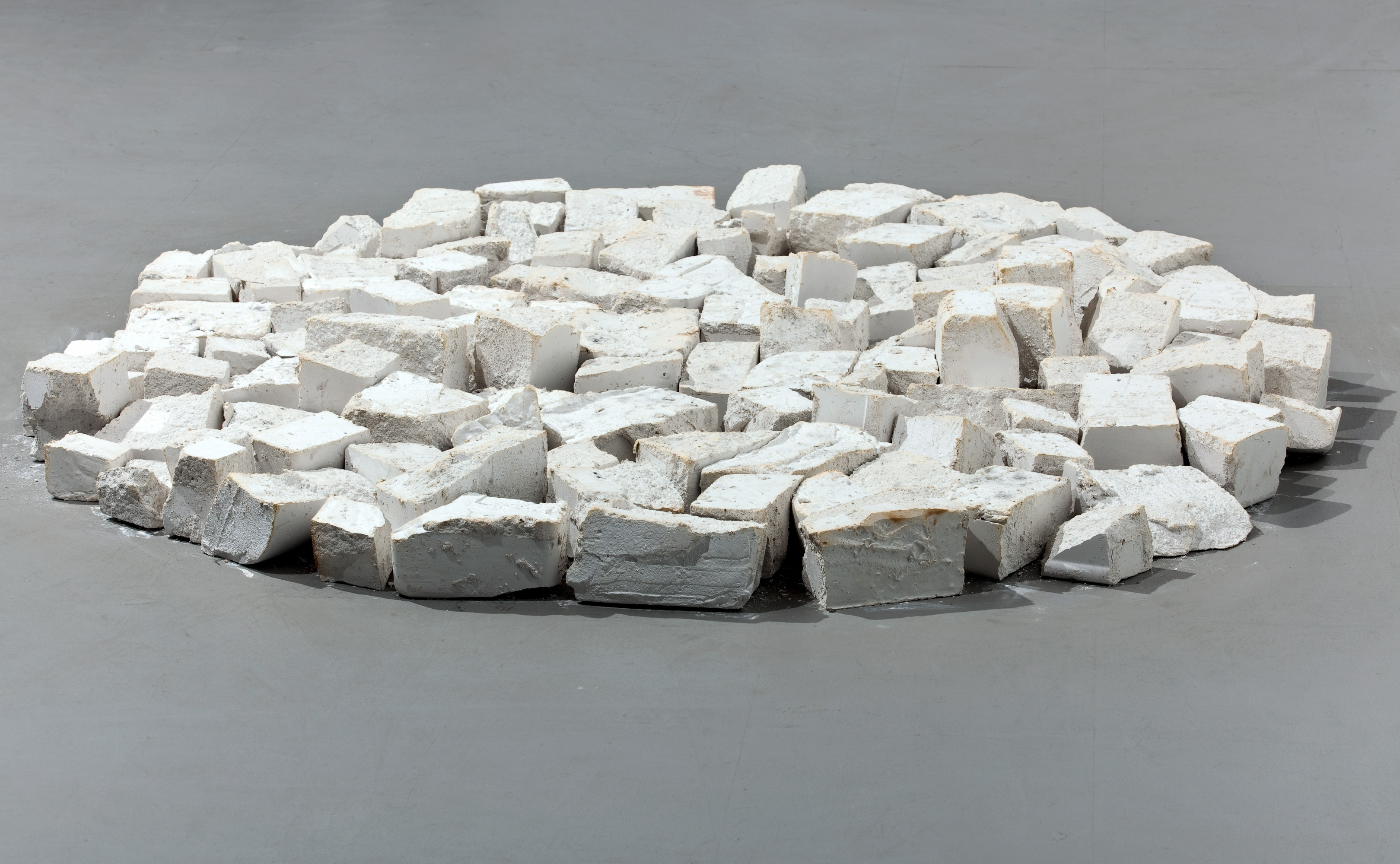
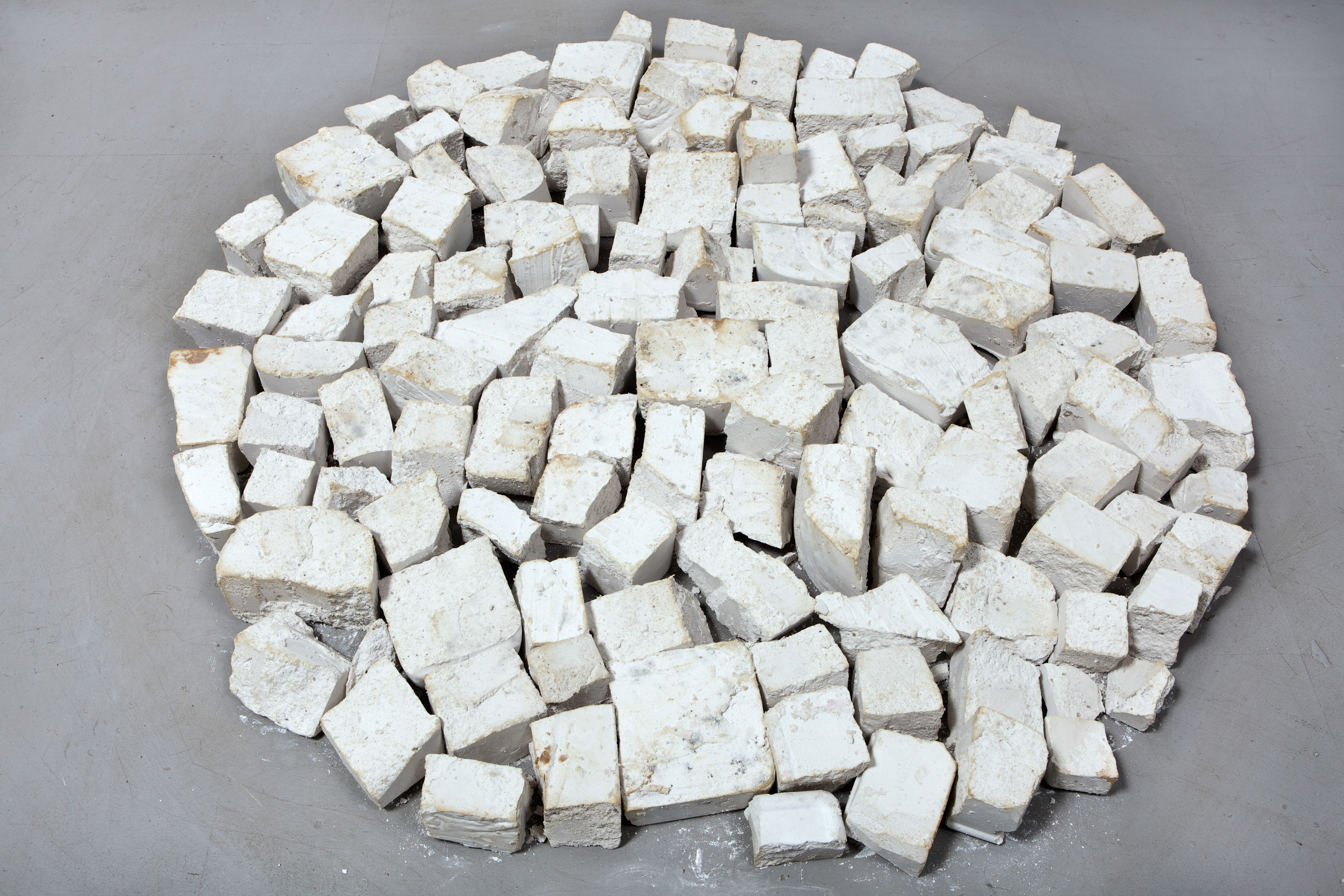


Recycling Richard Long: Gallery Walls Circle
2009
Gypsum, recycled from temporary gallery walls, cast into blocks and arranged into a 6 ft.-diameter circle
Photos: Michael Underwood
However, recycling isn’t replication, and this work isn’t meant to be a Richard Long knockoff. Instead, it is something of an inversion. Whereas Long brought natural materials into the artistic context of the gallery, I wanted to use a “native” gallery material—drywall—and transmute it into raw artistic material—plaster of Paris. Gallery walls left over from an exhibition were broken down, processed, and pulverized to make fresh plaster of Paris.
One of the stipulations that I gave myself for this project was that I would not purchase anything new. Thus the entire process of breaking down the drywall and baking and pulverizing the gypsum was quite humble and low tech. After first breaking down the drywall, I used an old blender and my oven at home to dehydrate and pulverize the gypsum before casting it into blocks using various containers that I had in my studio. The amount of material determined the scale of the work, and the final forms were determined by the process rather than a priori aesthetics.
RECYCLING PROCESS
![]()
![]()
![]()
![]()
![]()
![]()
One of the stipulations that I gave myself for this project was that I would not purchase anything new. Thus the entire process of breaking down the drywall and baking and pulverizing the gypsum was quite humble and low tech. After first breaking down the drywall, I used an old blender and my oven at home to dehydrate and pulverize the gypsum before casting it into blocks using various containers that I had in my studio. The amount of material determined the scale of the work, and the final forms were determined by the process rather than a priori aesthetics.
RECYCLING PROCESS
